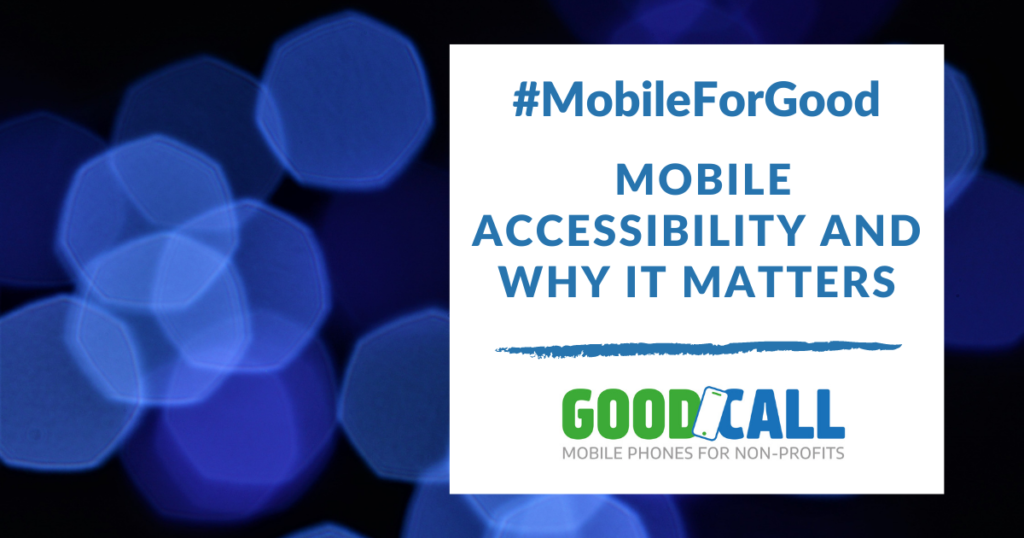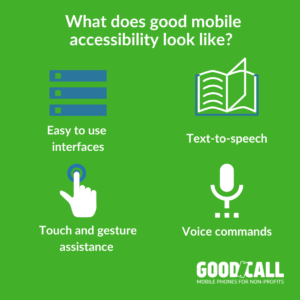
As part of our digital inclusion series, we wanted to look at some exciting developments and innovations that are making smartphones more accessible for everyone. Around a quarter of disabled adults have never used the internet and disabled people are 23% less likely to have access to technology that enabled them to get online (ONS, 2019).
Many charities need the right technology to meet the unique needs of the people that they support. Mobile phones are increasingly central to the way we live and work, and luckily, there are lots of ways to turn your phone into a really useful tool. Read on and we’ll talk you through a whole host of tips and tricks to help you adapt your phone for your or your services user’s needs.
 Most smartphones are now equipped with tools to provide a more inclusive user experience. When a mobile or app is accessible, it can be easily used by everyone which is particularly useful for those with additional support needs. Examples of this can be:
Most smartphones are now equipped with tools to provide a more inclusive user experience. When a mobile or app is accessible, it can be easily used by everyone which is particularly useful for those with additional support needs. Examples of this can be:
There are several misconceptions about mobile accessibility. Some being that it is difficult to implement and it comes at an elevated cost, but these are not true. Most handsets now come with in-built assistive technology features (AT), meaning that you don’t have to spend lots of money on expensive apps to make your phones more accessible. Mobile accessibility is vital for making all users feel included and engaged in an increasingly online world. If you have questions around accessibility features or specific requirements to meet your organisation’s needs, get in touch with the GoodCall team and we would be more than happy to investigate the best handsets and technology solution to fit the unique needs of your organisation.
A growing number of companies are investing in developing hardware and software that makes standard smartphones much more accessible and easier to use. Most mobile devices now come with assistive technology (AT) that can help with reading, writing and daily life. Common built-in AT features include text-to-speech and dictation technology.
However, if you have a specific accessibility need, there are now many free apps on both the Apple, Android and Google Play stores which are either free or very accessible in terms of cost. Some examples of this are:
——————————————————————
These innovative apps demonstrate the power of mobile for good – and how technology can help build stronger and safer communities. Check out our #MobileForGood blog series for more stories about organisations delivering a big impact in communities around the world.
At GoodCall, we can support your charity to deliver impact through mobile technology. We provide bespoke advice to help you make the most of your mobiles. Get in touch with us now via our contact form or call Elaine on 07535 396 882.